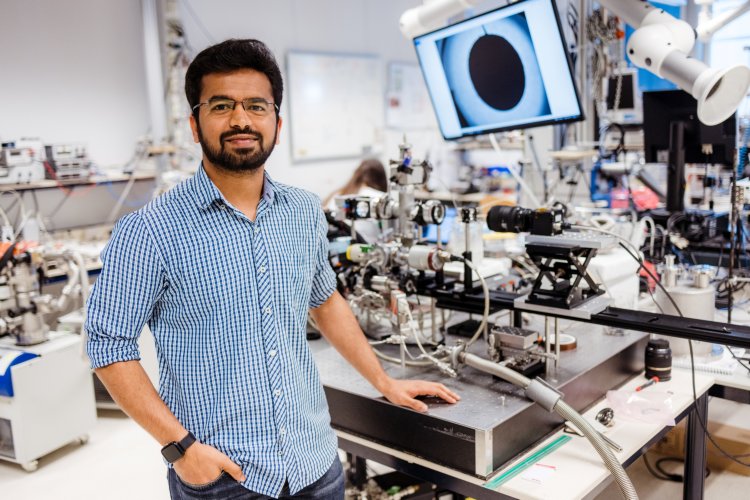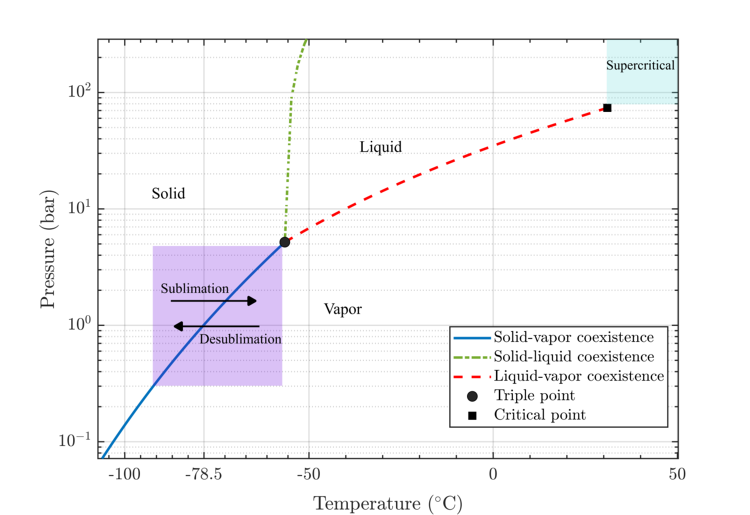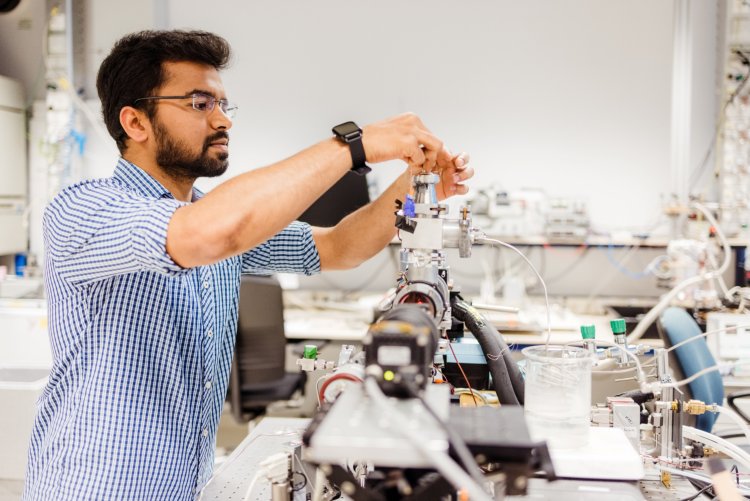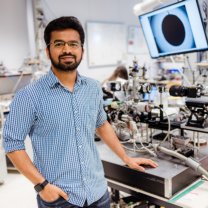Meet our Energizer! Abhishek (Abhi) Purandare
How carbon dioxide can help the energy transition: from ultra-low temperature cooling to high temperature heating applications
Originally from India, Abhishek (Abhi) Purandare holds an MSc in Sustainable Energy Technology and a PhD in Applied Physics, both from the University of Twente. He now works as an Assistant Professor in the Department of Thermal and Fluid Engineering, Mechanical Engineering, at the University of Twente. When asked about his MSc and PhD orientation, Abhi says: “Applied and fundamental research go hand in hand. I want to apply my knowledge directly to create high-performing systems.”

Photo credit: Lizet Beek.
During his PhD project, Abhishek worked on sublimation phenomenon of carbon dioxide (CO2), which is the process by which carbon dioxide can transition directly from a solid to a gas without passing through a liquid phase. This transition is set off below the triple point, which is the temperature and pressure at which the transition starts to unfold, see figure 1 below.
This sublimation phenomenon has the potential to be used for ultralow temperature refrigeration, which is used for storing pharmaceuticals and in high-tech manufacturing. Compared to current ultralow temperature refrigeration alternatives, carbon dioxide is a non-flammable and non-toxic refrigerant with a cooling potential over two to three times higher than synthetic alternatives. In this regard, carbon dioxide is a non-toxic alternative to PFAS chemicals, which persist in our environment and pose risks to our health, and are currently used for cooling.
Our understanding of sublimation behaviour in confined geometries or closed spaces, such as the evaporator in a refrigeration system, is still limited. This is an emerging research area that has captured Abhishek’s attention in recent years.
Capturing carbon dioxide for mitigating climate change
Phase transition of carbon dioxide plays a role in addressing challenges related to climate change. To address this challenge, Abhi works on cryogenic carbon capture. This cryogenic technology involves separating carbon dioxide from industrial flue gases via a gas-to-solid phase transition. This method has several advantages: it captures carbon dioxide without the use of solvents or membranes, functions at near atmospheric pressures, and produces solid carbon dioxide, which can be liquefied for transport, storage and future use. The process is based on ‘desublimation’, which is the reverse of sublimation. Although it is considered environmentally friendly, its success depends entirely on mastering the gas to solid phase change behaviour.
Cryogenic carbon capture technology is particularly attractive for industries where cold energy streams are readily available, such as the air separation units, LNG processing plants, and facilities using specialized refrigeration systems. Abhi notes, “The process of capturing carbon dioxide via this phase transition is very elegant and sustainable, and therefore a great motivation to gain a better understanding of this technology.”
Decarbonising industrial heating using supercritical carbon dioxide
Another area of research Abhishek focuses on involves industrial heating at temperatures above 150 °C, a domain traditionally dominated by fossil-fuel-based systems. Electrically driven heat pumps offer a decarbonisation solution for the greening of industrial heating.
In these alternative systems, carbon dioxide is a suitable fluid due to its moderate critical point. When operated around or above this point, carbon dioxide does not undergo a traditional phase change but instead transitions between liquid-like and gas-like states in a continuous manner. During these phase changes, its physical properties, such as how it conducts heat, change quickly with temperature. These special conditions need to be studied closely because the way it transfers heat is very different from well-known boiling or condensation processes.

Figure 1: Phase diagram of carbon dioxide (courtesy of Abhishek Purandare)
Taking an honest look at the problems is key to moving forward
Abhi: “Carbon dioxide often receives a negative reputation in public discussions, but it plays a pivotal role in the energy transition. Phase transitions are very important in this respect.
I contribute to this process through systematic investigation of carbon dioxide phase transitions. My colleagues and I use optical and electronic diagnostics to analyse the underlying physics of phase change phenomena. Combining this experimental work with computational modelling of phase behaviour, we gain a better understanding of these phenomena.” Ultimately, Abhi's goal is to find novel proof of concepts and help to improve the reliability of existing sustainable technologies.
When dealing with complex problems and technologies, things don’t always go as planned. Experimental failures, unexpected data and setup failures are all part of the process. Abhi says, “Overcoming setbacks requires acknowledging the problems and finding a new focus to find solutions. I prefer to work in an environment where I can have open discussions with colleagues and students, and where we can honestly look at the problem at hand. These discussions frequently lead to ‘aha!’ moments. This makes the journey really worthwhile.”
4TU.Energy provides a platform for learning and collaboration, resulting in deployable solutions for the energy transition
“Regarding the energy transition, we are making timely progress in developing green energy technologies,” says Abhi. “Close collaboration has been established between industry and academia, and skilled personnel at all career levels are involved in supporting the transition towards clean, reliable, efficient systems.”
4TU.Energy also plays a visible role. Abhishek attended the 4TU.Energy Community Day for the first time in 2025. There, he witnessed the centre’s role in uniting researchers, students, and experts from start-ups and companies. Abhi: “I met people from different but complementary backgrounds, which shows that 4TU.Energy creates a space for learning and collaboration that leads to solutions that can be implemented. In my view, such a community is essential for transforming scientific knowledge into solutions for society.”

Photo credit: Lizet Beek.
More about Abhishek Purandare
Abhishek Purandare is an Assistant Professor in the Department of Thermal and Fluid Engineering, Mechanical Engineering, at the University of Twente, visit his personal profile at the University of Twente for more information.
